Joburg Heritage: Churches of Coronationville and Bosmont
Apologies to everyone who received this post in their inbox last week and has now received (and opened) it again. My site experienced a problem this week and the original version of the post was deleted, so I had to reload it. The text and images in the post are the same as before, so please don’t reread it unless you feel like refreshing your memory.
Last weekend I went on a tour of Coronationville and Bosmont as part of the Johannesburg Heritage Foundation’s annual heritage weekend. Every year in September, the JHF offers a weekend series of discounted heritage tours around the city – all starting and ending at Holy Family College in Parktown. (Read my previous blog post about the JHF heritage weekend.)
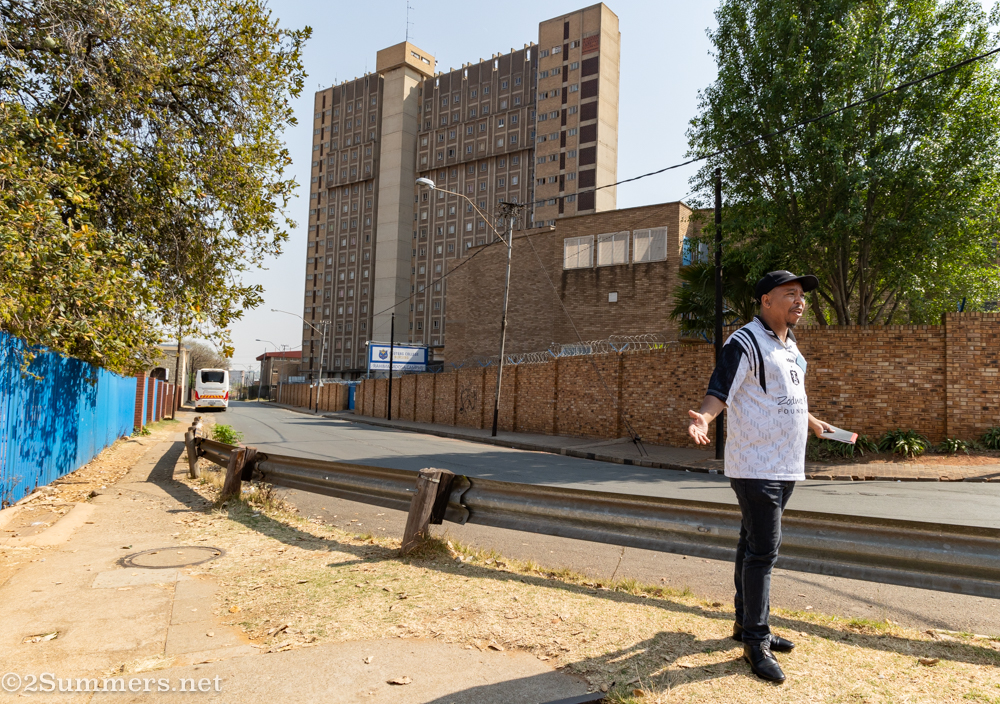
The Coronationville and Bosmont tour visited three really interesting churches: St. Anthony’s Catholic Church in Coronationville, St. Joseph the Worker Catholic Church in Bosmont, and St. Luke’s Anglican Church in Bosmont. The rest of the tour happened from inside a bus so I only have pictures from in and around the churches. But I’m very keen to revisit these neighborhoods; I only live a few minutes away but I hardly knew anything about them before. Both suburbs have really interesting architecture and I’d love to see more.
A Bit About Coronationville and Bosmont
Coronationville and Bosmont are adjoining neighborhoods about 15 minutes west of downtown Joburg. Both are historically “Coloured” suburbs, meaning they were designated solely for Coloured people under the Group Areas Act of 1950. Coloured is a specifically South African term, rooted in the country’s long history of racial segregation; under apartheid and for many decades previously, the term “Coloured” referred to mixed-race people with a combination of African, European, and Malay (Asian) ancestry. (“Coloured” and “Black” do not mean the same thing in South Africa and many South Africans still self-identify as Coloured. If you’d like to know more, there’s a very detailed Wikipedia page on the subject.)
Coronationville was founded in 1937, the year King George VI was crowned, and was later given as a “gift” to Coloured soldiers returning to South Africa after World War II. Bosmont was founded in 1962, during a time when Coloured people were being forcibly removed from nearby areas like Albertville and Fietas.
St. Anthony’s Catholic Church
St. Anthony’s, the first church we visited, is in Coronationville across from Rahima Moosa Mother and Child Hospital. The church was built in 1980 by architect Donald Turgel, whose work was influenced by his travels in Morocco. St. Anthony’s didn’t make a huge impression on me from the outside but the inside is spectacular, albeit hard to capture in photos.

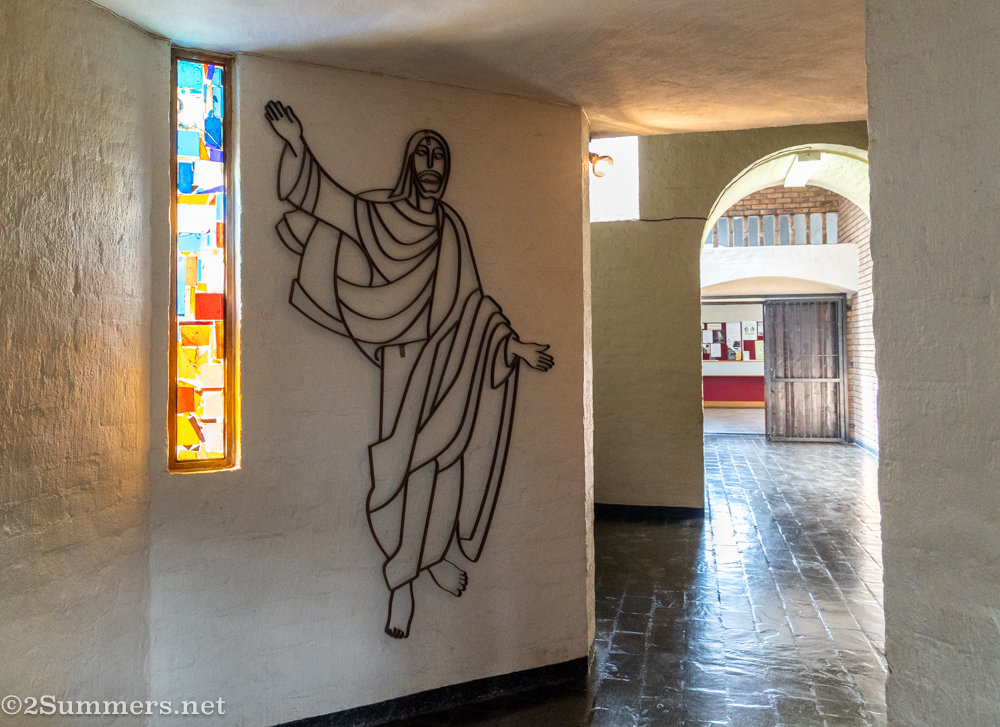
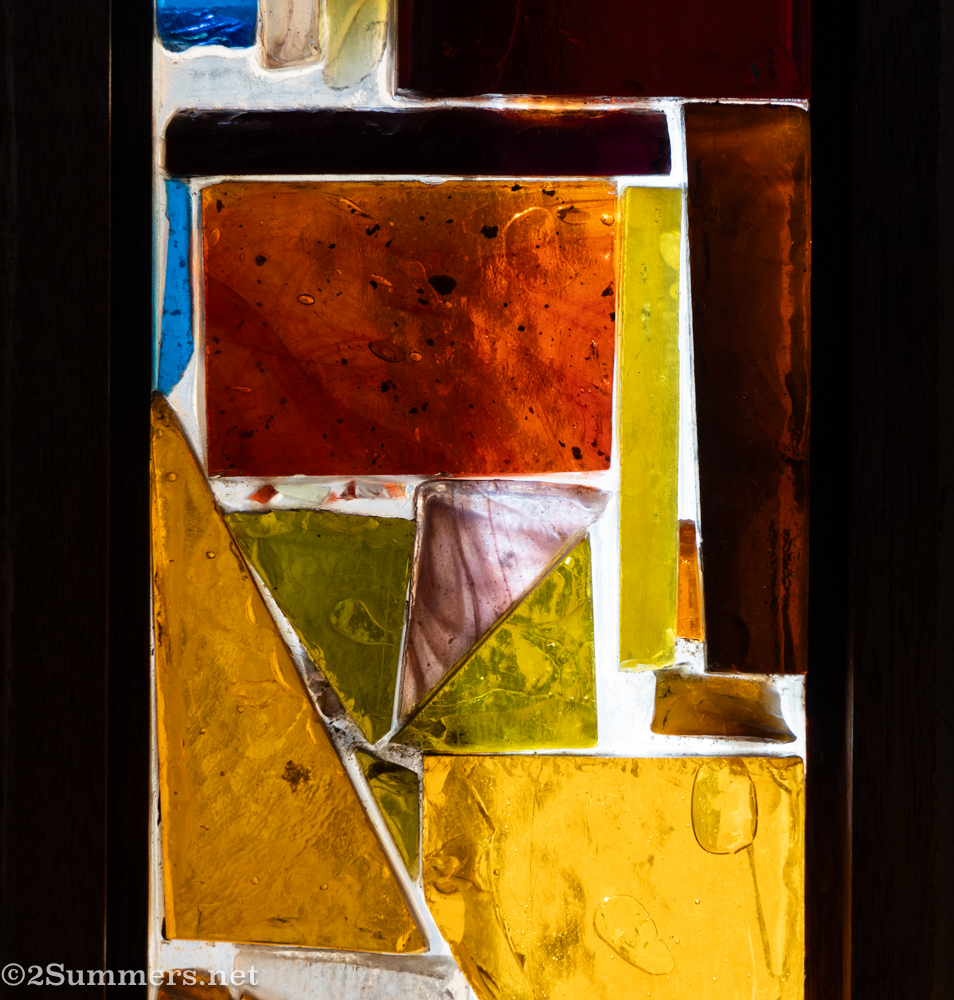
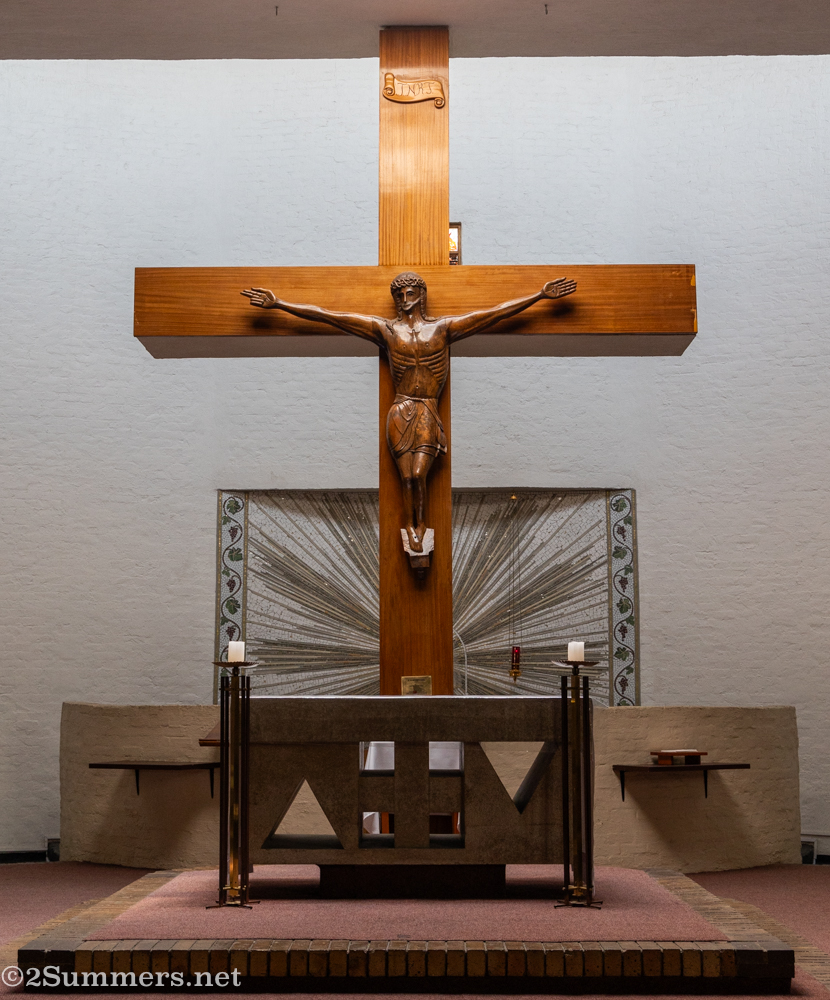

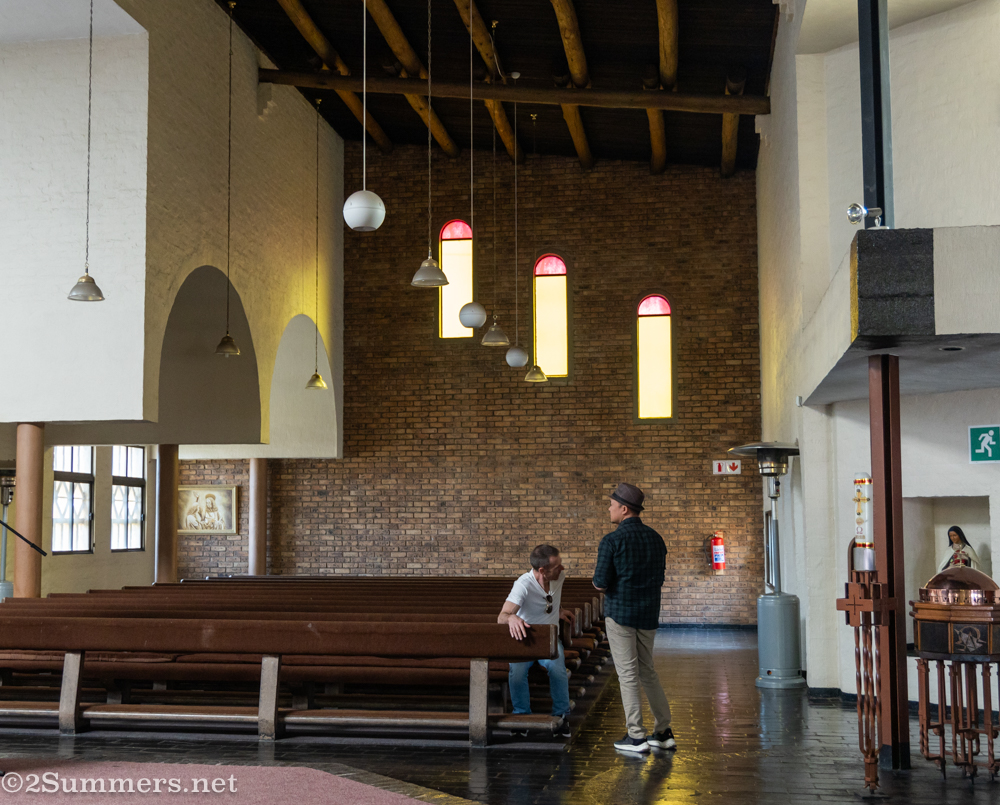
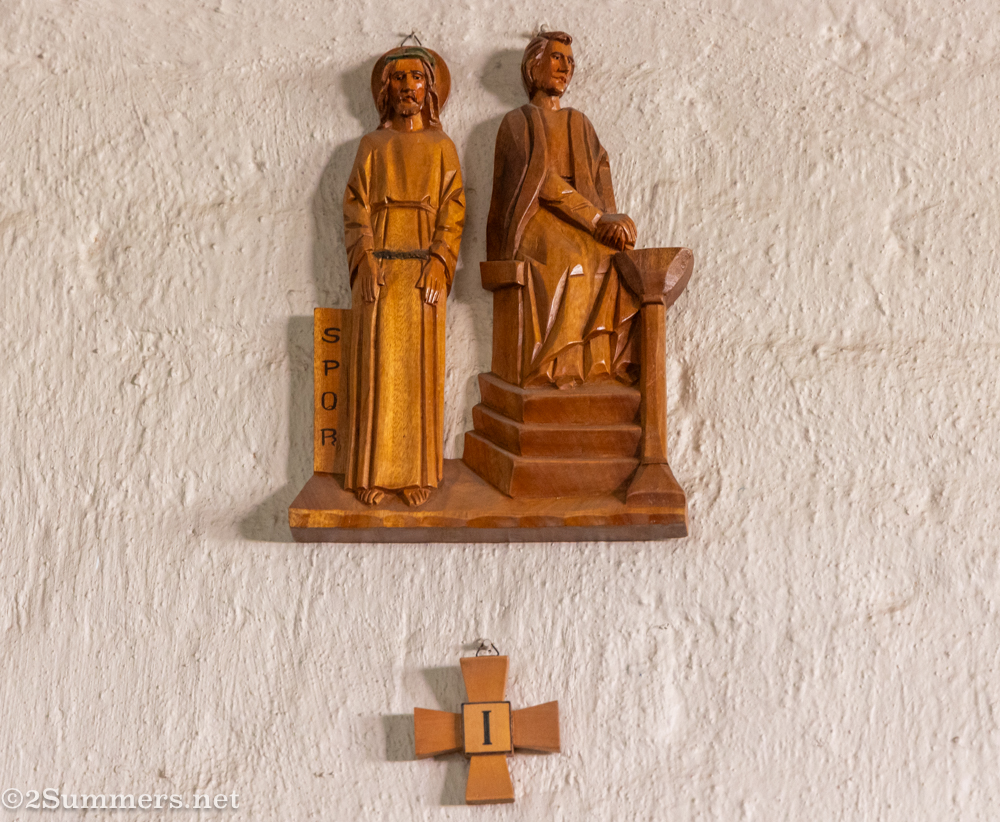
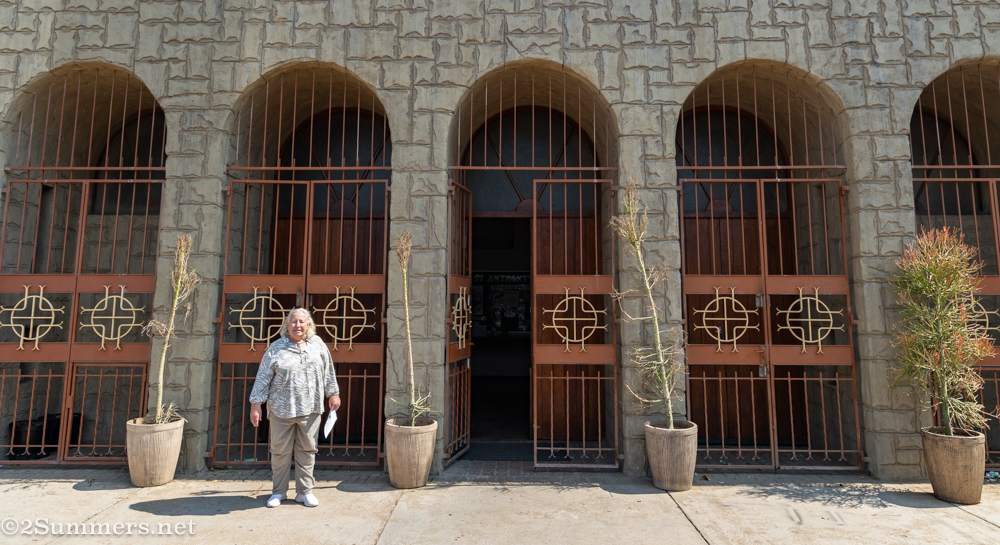
St. Joseph the Worker
We crossed over into Bosmont, passing many delightful mid-century bungalows, on our way to St. Joseph the Worker Catholic Church. St. Joseph is notable for sitting right between the Bosmont Masjid (mosque) and St. Luke’s Anglican Church (which I’ll talk about in a moment).
St. Jospeh the Worker was also built by Donald Turgel, in 1969, and has a similarly clean, modern design.
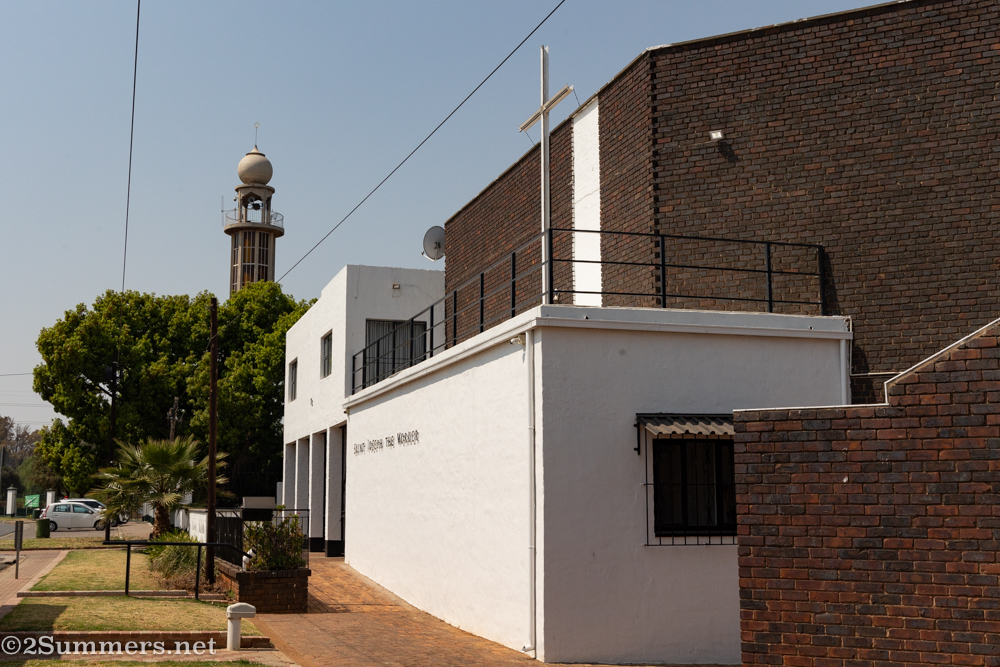
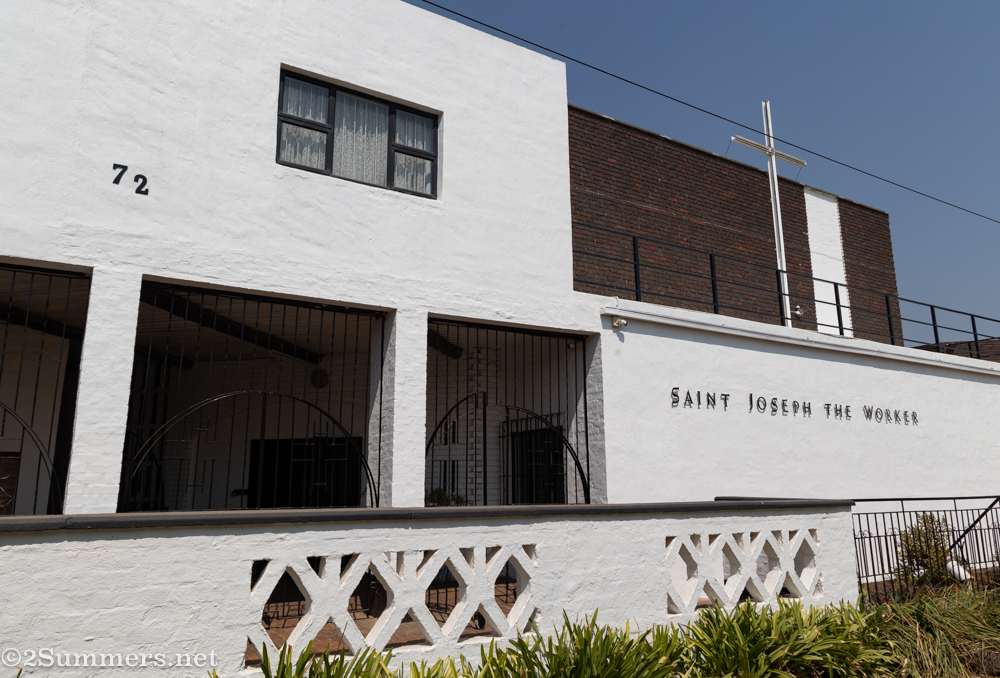
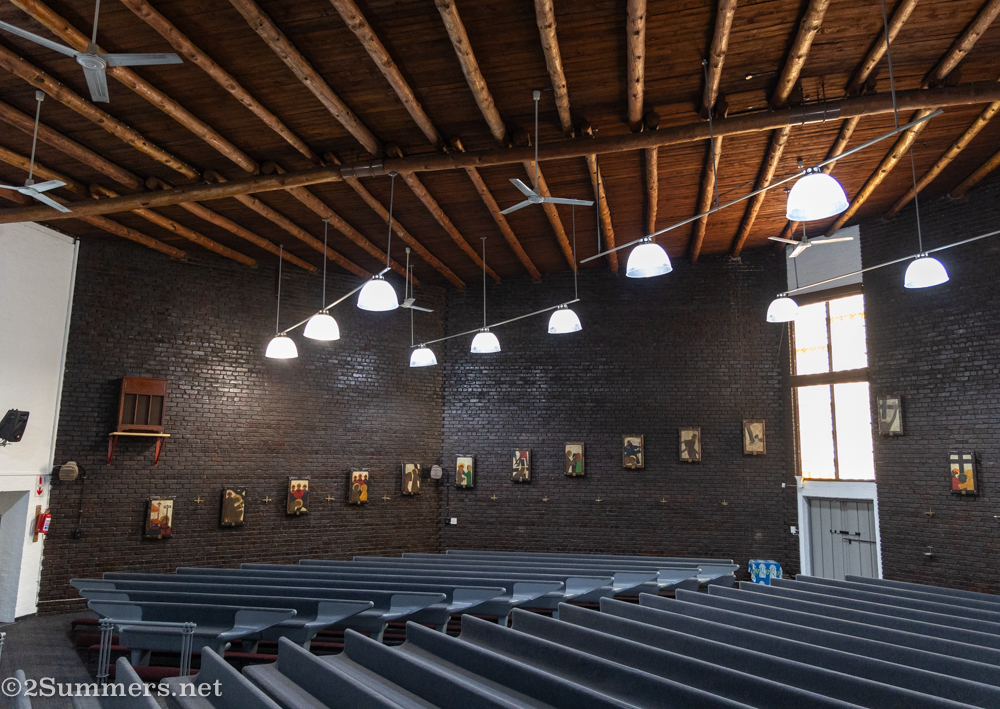
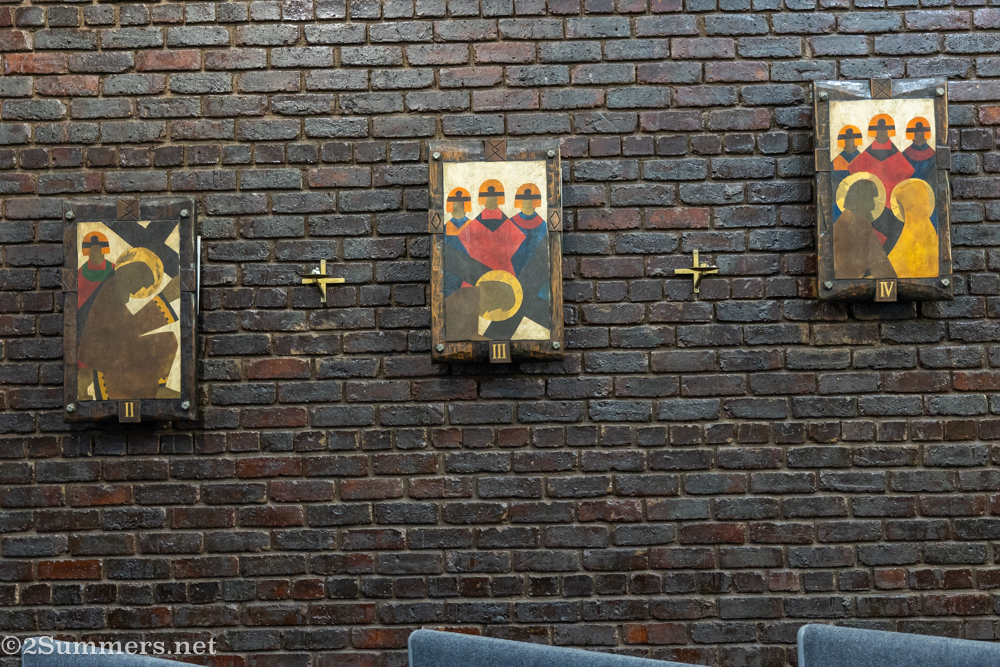
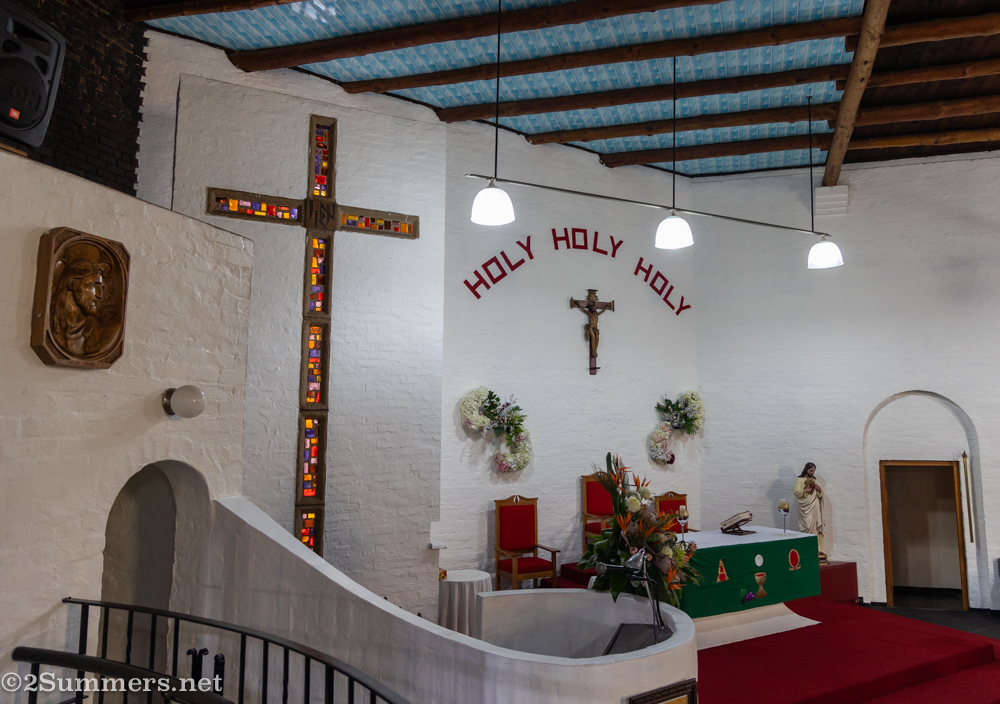
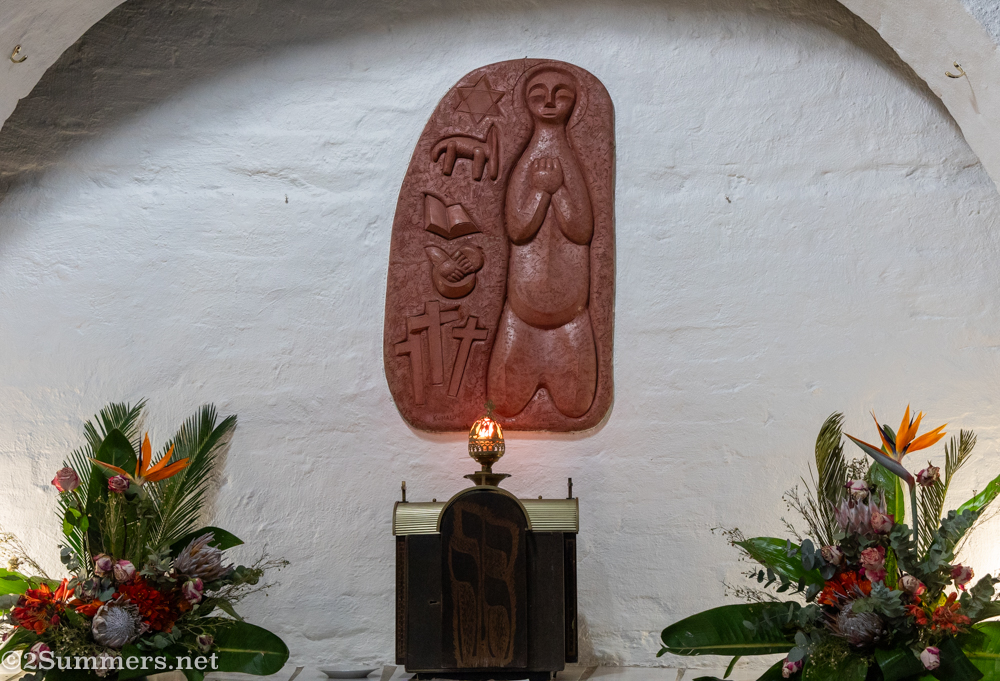
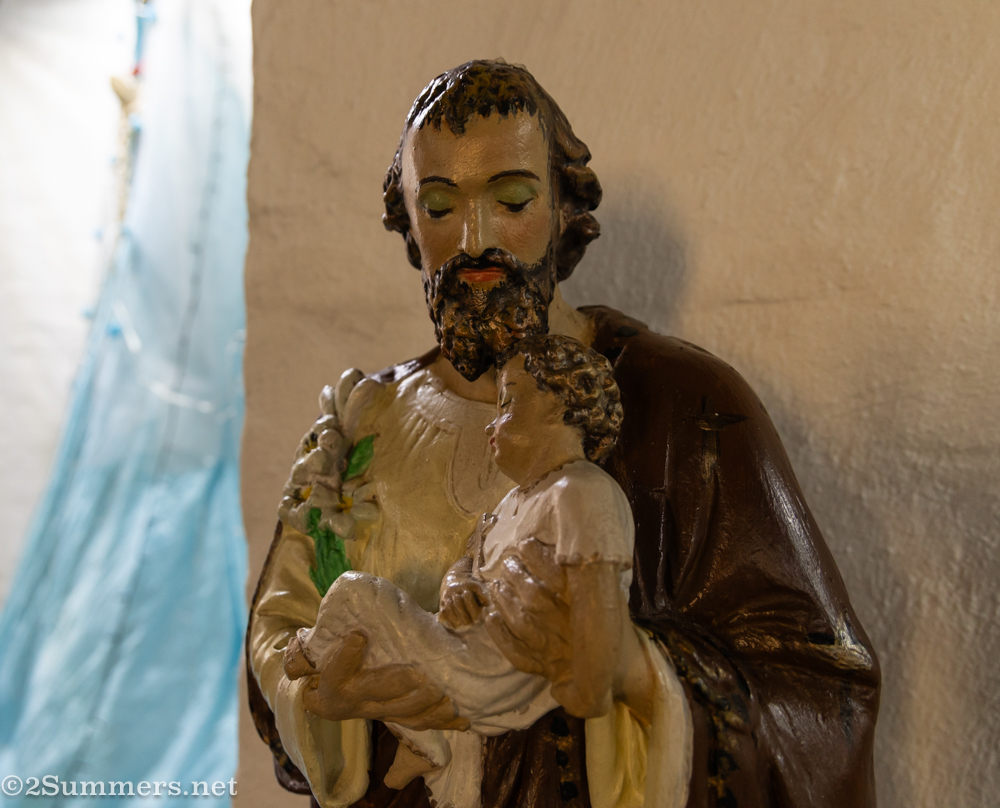
St. Luke’s Anglican Church
Our tour guides hadn’t planned to take us inside St. Luke’s Anglican Church. But it sits right next to St. Jospeh the Worker and a deacon at St. Luke’s happened to see us and invite us in.
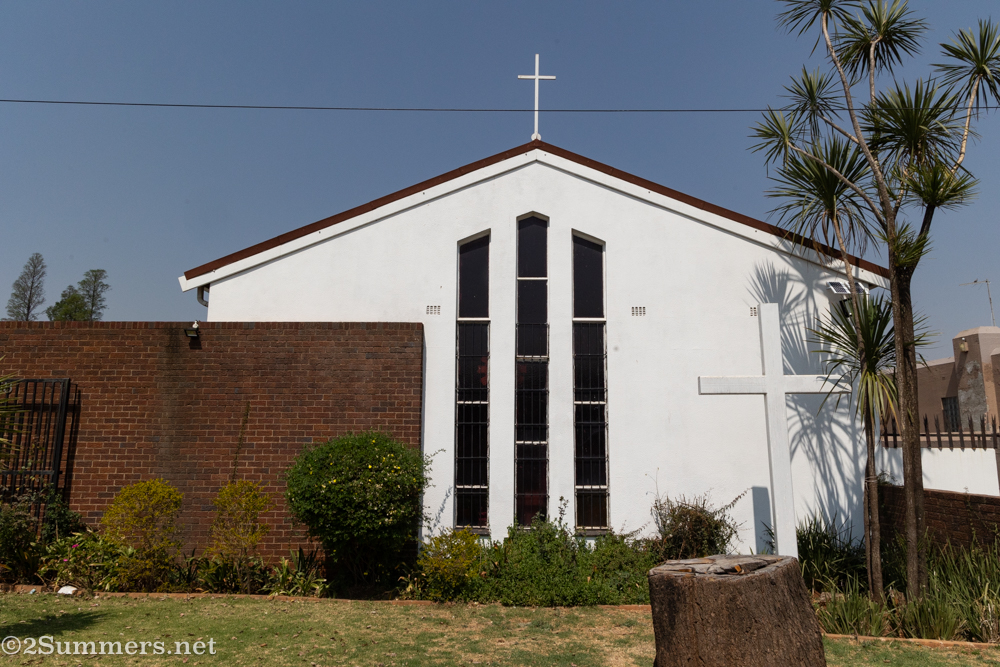
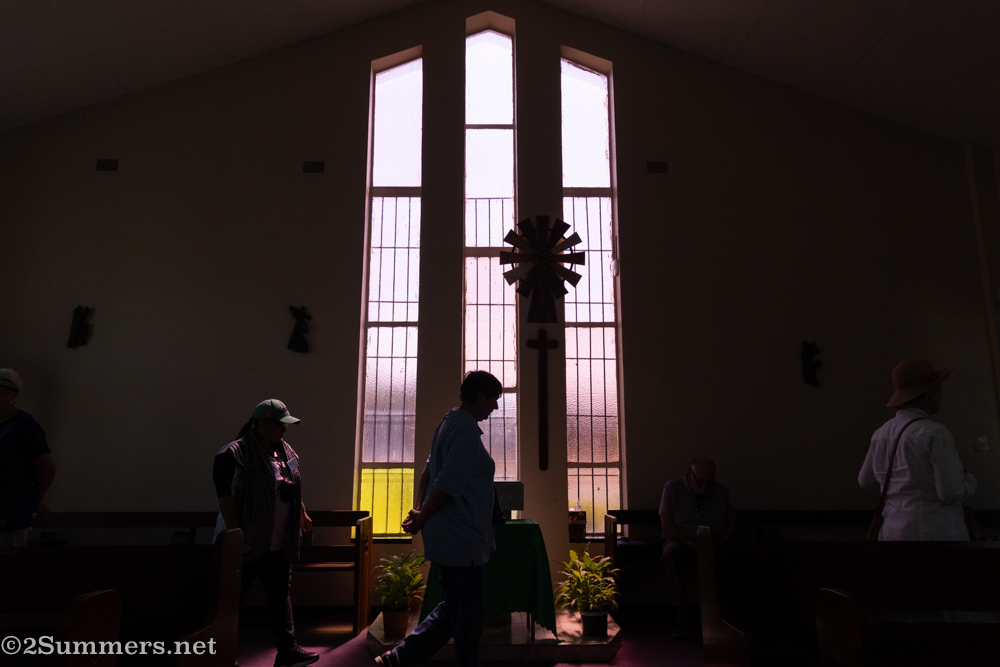
The most interesting thing about St. Luke’s is that it was built on a piece of land with a downward slope. Hence, the center aisle of the church slants down steeply toward the pulpit.
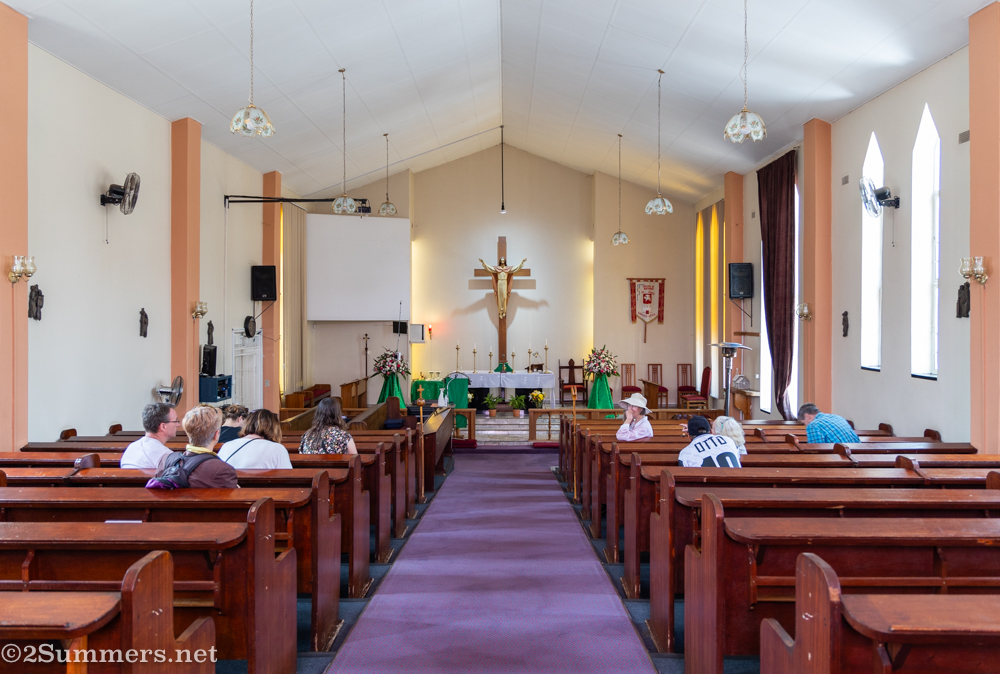
On the way back out to the bus I met the reverend at St. Luke’s – a lady reverend! – and asked to take her picture.
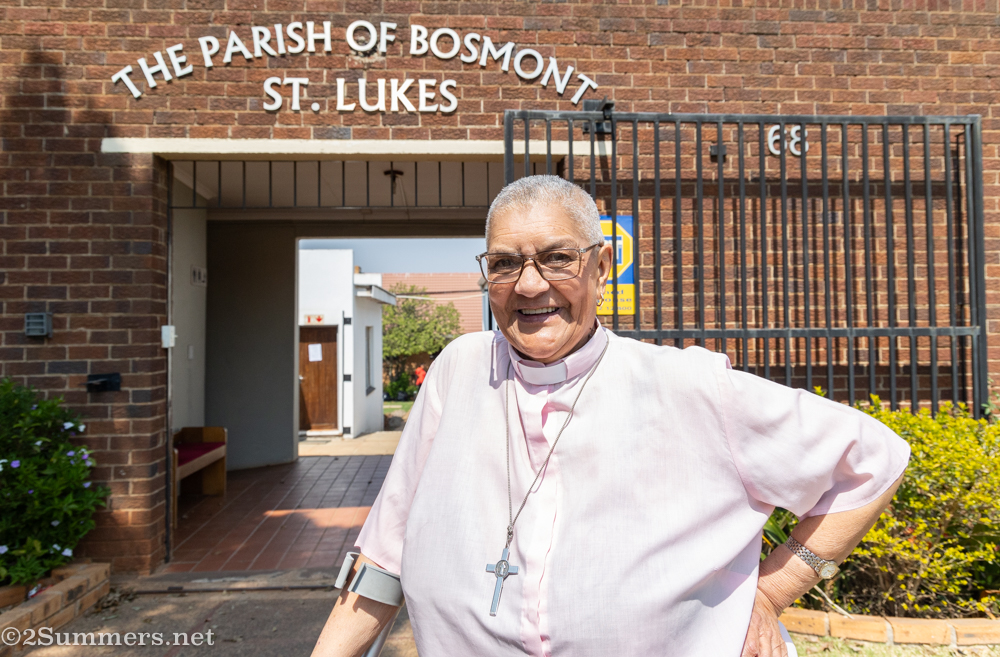
And that was our Heritage Month tour of Coronationville and Bosmont. As always, I encourage everyone to check out the great work that JHF is doing and sign up for a tour. There is a tour of Lindfield House, one of my favorite quirky Joburg places, coming up on September 23.
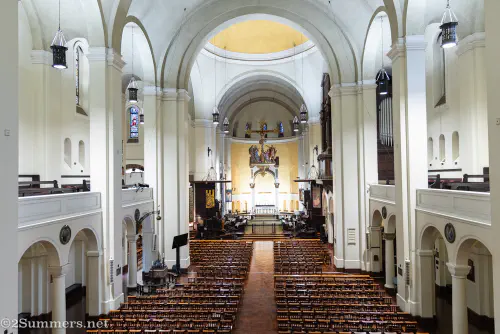
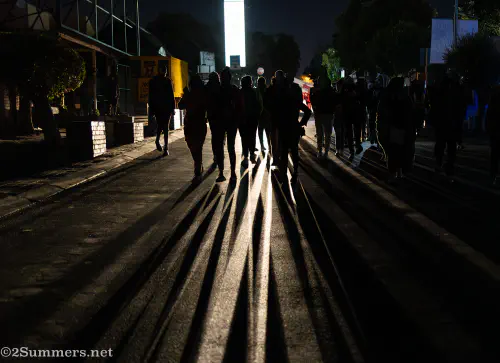
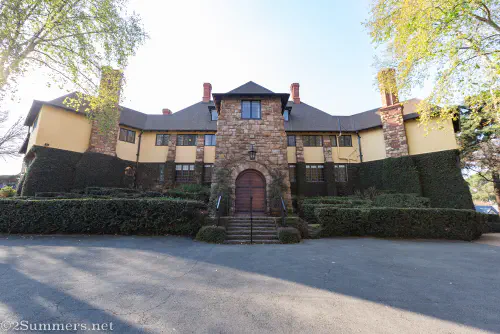
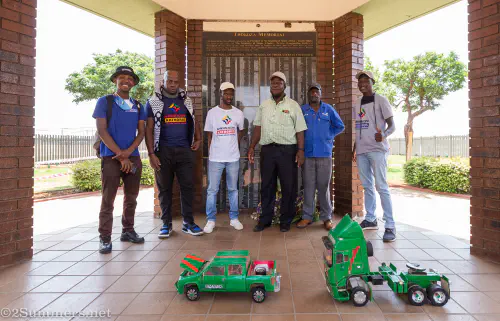
Comments
For a minute I was thinking you were going to do ALL the churches in the city. Sorry you had to reload.
Haha, I may eventually cover all the churches. Thank you for making the effort to give me a comment on the new version!